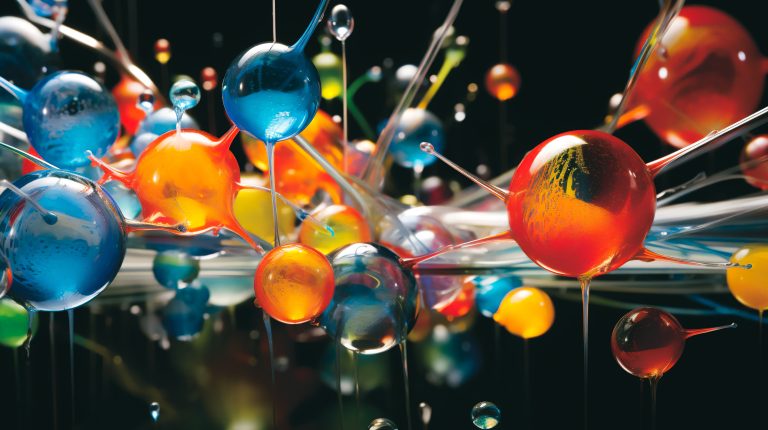Key Takeaways
- Raman spectroscopy, integrated into microscopy techniques such as confocal microscopy, enhances the molecular analysis capabilities of Raman instruments, particularly in the life sciences field.
- Advanced techniques like Surface-enhanced Raman spectroscopy (SERS) optimize molecular analysis by amplifying Raman signals on nanostructured metal surfaces, expanding applications in ultrasensitive sensing.
- Biomedical imaging benefits from Raman spectroscopy’s noninvasive nature, enabling high-resolution molecular visualization for disease diagnosis and medicine identification in the life sciences.
- Near-infrared (NIR) Raman spectroscopy, utilized for brain analysis, offers noninvasive measurement of neurotransmitter concentrations with high precision, advancing neuroscience research.
Unveiling the Versatility of Raman Spectroscopy
Raman spectroscopy is a versatile analytical technique that has revolutionized our ability to investigate the molecular composition and structure of various materials. This method relies on the inelastic scattering of light by a molecule’s chemical bonds, providing unique insights into vibrational energy and distinct chemical signatures. Despite its potential, the Raman signal is typically weak compared to absorption and fluorescence spectroscopy. However, recent advancements in technology have led to more stable and affordable Raman instruments, expanding its applications in fields ranging from life sciences to materials science.

Evolution of Raman Instruments
Modern Raman instruments leverage continuous-wave or pulsed lasers at fixed wavelengths across the UV to the near-infrared spectrum. These instruments incorporate sensitive CCD detectors while suppressing background Rayleigh scattering through filters and combating fluorescence with techniques like confocal apertures and wavelength shifting. Notably, cooling systems for Raman CCDs have evolved into simpler thermoelectrically cooled detectors. High-end Raman devices can now house multiple lasers, which can be software-selected and calibrated with minimal user intervention, further reducing background fluorescence.
Laser’s Crucial Role
The choice of the light source is pivotal in Raman spectroscopy because the wavelength of scattered photons differs from that of the exciting laser source. Monochromatic light sources, such as lasers, are ideal for accurate measurements of the Raman effect, emphasizing the importance of wavelength selection when developing a Raman spectroscopy system.
Advanced Raman Techniques
Surface-enhanced Raman spectroscopy (SERS) is a variation of Raman spectroscopy that has found applications in ultrasensitive sensing, including DNA and virus analysis. SERS optimizes Raman scattering by molecules adsorbed on nanostructured metal surfaces (e.g., silver, gold, or copper). This technique amplifies the Raman signal through electromagnetic and chemical mechanisms, yielding signal enhancements on the order of 10^10 to 10^11. This amplification is crucial, given the inherent weakness of normal Raman scattering.
Integration with Microscopy
It is frequently integrated into microscopy techniques, such as confocal microscopy, using laser-based Raman microscopes. These systems incorporate excitation lasers, laser filters, and spectrometers with detectors, typically CCDs or photomultiplier tubes. The microscopic application of Raman spectroscopy is invaluable for analyzing tiny structures and identifying chemical compositions, enhancing spatial resolution for 3D imaging.
Biomedical Applications
It has made significant contributions to biomedical imaging, enabling noninvasive, in vitro visualization of biological structures. High-resolution images are attainable through confocal microscopy combined with Raman spectroscopy, offering improved spatial resolution for 3D imaging. Additionally, this technique is vital for diagnosing diseases and identifying medicines’ compositions in the life sciences.
Clinical Disease Detection
This spectroscopy is increasingly employed in clinical disease detection due to its ability to distinguish between healthy and malignant tissue based on their distinct spectra. This technique eliminates the need for biopsies and lab analysis, offering faster and more efficient results. It plays a critical role in detecting various cancers, including breast, lung, skin, and digestive system cancers, leading to better patient outcomes.
NIR Raman Spectroscopy
Near-infrared (NIR) Raman spectroscopy is a noninvasive approach used for brain analysis by measuring neurotransmitter concentrations through thin regions of the skull with high precision. However, Raman signals weaken as they pass through the skull. Advanced techniques, such as surface-enhanced Raman spectroscopy utilizing nanostructured materials, can amplify these signals, enhancing the accuracy and applicability of this method in neuroscience.
Versatile Analytical Tool
Raman spectroscopy is a versatile technique for nondestructive identification of unknown substances across a wide range of industries. Selecting the appropriate mirrors, lenses, and prisms when assembling a Raman system is essential to minimize noise, light loss, and meet specific application requirements. From archaeology to disease diagnosis, this laser-based diagnostic method continues to play a crucial role in advancing our understanding of the molecular world and improving various industries.
Conclusion
Raman spectroscopy’s remarkable ability to unveil the molecular characteristics of substances, coupled with recent technological advancements, has propelled it into a wide array of applications, particularly in the realms of life sciences and medical diagnostics. This powerful analytical tool continues to evolve, promising further breakthroughs in our ability to understand and analyze the world around us.
GREAT ARTICLE!
Share this article to gain insights from your connections!




